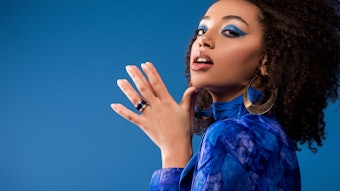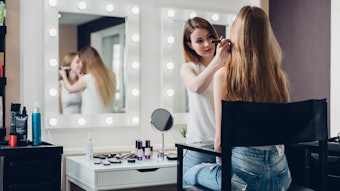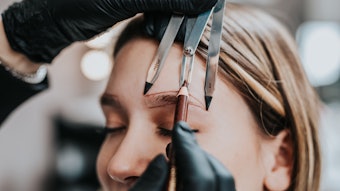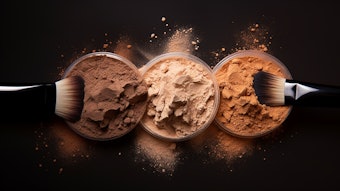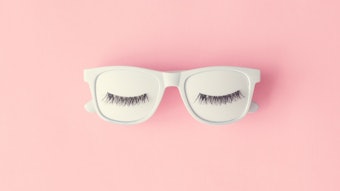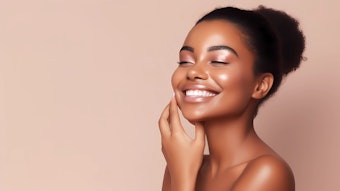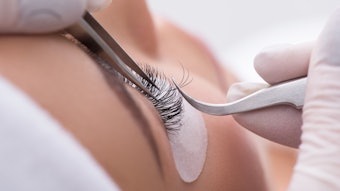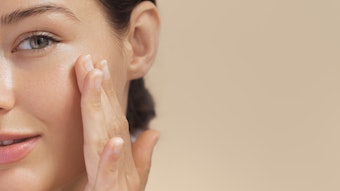
In 2006 when I opened my spa, there was a big, unanticipated problem. Women weren’t coming to the spa to purchase makeup. Although they were thrilled with the results of their skin care treatments, they weren’t seeing the value of buying their cosmetics in a skin care facility.
Perhaps I was naive back then, because I had been the top salesperson at a cosmetic counter during my college years, which led me to believe makeup sales would be easy at my own spa. I considered a variety of causes. The spa offered all of the usual makeup services, including makeup lessons, creating looks for wedding parties and providing a “dust-off” service after a facial, but those things weren’t creating the demand necessary to meet the forecast for cosmetics sales. Many skin care professionals include cosmetics in with their skin care education, so why are they not getting a larger piece of this revenue?
Clients today have many options for making cosmetic purchases: home makeup parties—otherwise know as direct sales—is a booming industry. This not only hurts spa business in terms of retail sales, but also has devalued skin care professionals’
expertise. The worst part is that clients aren’t getting what they deserve—personalized attention in order to look and feel their best. The cosmetics that a trained esthetician can recommend will be tailored for each client’s specific skin challenges to help make them look and feel their best. So what can owners do to reverse this trend in order to truly help clients achieve the whole look they desire?
Combat competitors
Skin care professionals need to be adamant about re-establishing the role of skin care facilities as the leaders in the beauty industry and restoring the integrity of what they offer clients in terms of cosmetics, which is a level of education and personalized service that is unique to skin care facilities. This message, of course, carries through to skin care services, as well.
Create a service that translates your expertise, and is exclusive to the professional beauty industry. This service can be a game-changer for skin care facilities. It helps clients to look and feel their best, and it simply can’t be replicated by any competition: color analysis.
Add color analysis
Each client has a unique skin color that they are born with and, through the color analysis service, a trained professional can identify a unique color ratio, and teach clients to embrace and enhance their skin tone through cosmetics and hair-coloring services. Color analysis, when conducted by a trained professional, provides clients with a custom fit for their makeup—but it’s not the color analysis from the 1980s. That system was a fantastic start, but it was flawed for a few reasons.
First, having the right lighting is critical, because it affects the outcome of the analysis. Second, the original color categories were limited to four seasons, which were just in the warm and cool categories. There are countless skin tones that need to be accounted for, and this provides a challenge when creating or selecting a foundation.
With further research, a solution to these issues was uncovered—a 12-season color analysis system. This system builds upon the original four seasons and accounts for neutral skin tones with smaller amounts of warm or cool present. In my spa, I decided to test the demand for this type of service. If clients are interested in makeup, offering color analysis services will take their basic application to the next level. In order to understand the whole concept of color analysis, each team member must be color analyzed. This gives them the experience that they can then share with clients. In addition, I created a makeup line by collaborating with a private label manufacturer that corresponded with the seasonal tones to make an absolute transformation for the clients; however, this can also be done using existing professional makeup brands.
Color analysis has been the key to unlocking cosmetic sales in my spa. Not only did this increase service sales, but the spa also became a destination point for clients’ cosmetic purchases. They love the fact that their personal color information is on file and a new color palette could be created for them for every season.
When a client comes in for a color analysis, they receive a color chart. This gives a visual of all of their best makeup choices for the season and the names of each individual product. All of their information is also captured in online business management software. Their client profile includes any products they have purchased or are interested in. Clients recommend this service to their friends, increasing referrals, and it opens the door to skin care conversations, as well. Clients love that they can look current by complimenting their own personal color harmony. They comment on how simply changing to the right colors makes them look years younger and effortlessly put together.
Clients who visit skin care facilities are generally image-conscious. They expect professionals to help them look their best. Offering free makeup applications at the end of every skin care service is a fantastic way to introduce the color analysis service, as well as ensure they look polished for the remainder of their day. Depending on the season, retail displays should be created that incorporate current color trends. Displaying before-and-after photographs in a book in the waiting area is also an easy way to peak interest for color analysis. Also, memberships can be created for clients—choose monthly products—both skin care and makeup—to offer at a discounted price to all members.
Reclaiming authority
Skin care facilities can add color analysis service to once again claim their authority as cosmetic experts. There are no expensive machines involved, just color drapes with a gray smock and cap, a mirror, full-spectrum lighting, and a trained color expert and makeup artist. In order to be successful in color analysis training, it’s most effective to become trained with a hands-on approach.
The analysis takes approximately 45 minutes, and a makeup application or lesson follows. It is strongly recommended to take a “before” picture, because the transformation the client will see is just amazing. Having before-and-after images will also increase your cosmetic sales. Pictures speak a thousand words. A picture is taken of the client without makeup before the color analysis is done. Then, an “after” picture is taken once color analysis and makeup is complete, with the color drape around their décolleté. Once the client sees the difference, you will have increased their interest in purchasing the cosmetics that were used to provide them their perfect look.
Color analysis is a great way not only to have an additional service revenue stream, but also to bring in new clients who will hear about the service from clients who have already experienced it, which will increase your clientele. Cosmetic sales will inevitably go up and repeat sales will double. It is a service that will lead clients to return to your skin care facility to repurchase the cosmetic products once they run out. Seasonal looks can also be created, which will increase service and retail revenue.
Women today do not want to be simply sold to. They’re hungry for real, concrete information about why they need products or services. If the skin care industry can deliver upon this, it will take back the lead on cosmetic sales while simultaneously raising the level of elite services within spas to attract clients who will make retail makeup purchases month after month.
Jaclyn Peresetsky is CEO, esthetician and color specialist at SkinPerfect Image Wellness Spa in Columbus, Ohio. She is the author of Discover the Power of YOUR Colors (CreateSpace Independent Publishing Platform, 2013).
